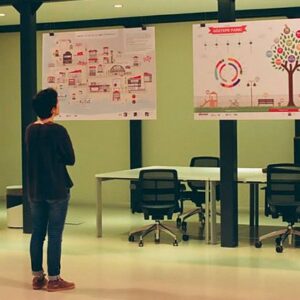Innovation Spurred by STEM
STEM (Science, Technology, Engineering and Math) education is a critical component in the education of all students that contributes to economic vitality in a borderless global society. Top math and science performer Singapore, as measured by PISA (Programme for International Student Achievement), understands well that an innovative knowledge economy requires a skilled workforce. It has invested heavily in education, trusting a 21st century workforce depends on students well prepared in science and mathematics. Successful workers also display competence in the abstract domains of reasoning, knowing, and applying to analyze data and solve problems. PISA assessments indicated that students from one U.S. state, Massachusetts, did very well in these domains. Massachusetts placed second in reasoning; third in knowing and fourth in applying while the U.S. ranking was 15 in each of the three domains.
There is evidence that socio-economic inequalities, as measured by income inequality and socially disadvantaged schools, contribute to mediocre rankings of U.S. student achievement. According to OECD (Organisation of Economic Cooperation and Development) research, overall socio-economic inequality explains 17 percent of variation in student achievement among 15 year-olds in the United States as compared with 9 percent among 15 year-olds in Canada and Japan (OECD, 2010). Variables such as the high proportion of U.S. 15 year-olds enrolled in socially disadvantaged schools (25 percent) and residing in single parent households (24 percent) exceed the OECD average of 17 percent (OECD 2011). It appears that these socio-economic stressors, exacerbated by inequities in school funding and teacher quality, significantly contribute to a disappointing picture of student achievement in mathematics and science among U.S. 15 year-olds.
A focus on STEM education would seem to be a reasonable policy commitment for U.S. states and countries throughout the world concerned about their futures in an innovative, high tech and knowledge-based global economy. Innovation is correlated with superior skills in science and technology. An historical survey of 220 famous 19th and 20th century entrepreneurs and inventors indicates that individuals with backgrounds in (1) engineering, (2) physics and (3) chemistry have been responsible for the majority of new technological breakthroughs or new applications to existing technologies (Baumol, 2009). The annual Global Index of Innovation, a respected publication that measures innovation in countries throughout the world using 84 indicators in five categories (“pillars’), measures innovation based on indicators of educational achievement and research activity. Student achievement in mathematics, reading and science, as well as the number of graduates in science and engineering, are correlated with technological and creative outputs (Global Index, 2013, Annex 1).
Individual U.S. states have studied carefully the correlation of innovative industries and STEM graduates. States have developed economic policies to provide incentives for corporations to settle in the state. In a recent survey conducted by the Information Technology and Innovation Foundation (ITIF) to measure indicators of U.S. state success in the global economy, Massachusetts and Delaware ranked first and second as states poised to compete successfully in the global economy due to their high numbers of knowledge-based jobs, fast-growing high tech companies and attractive investment policies. Massachusetts also ranked number one when examining another indicator, “workforce education,” in effect aligning their workforce needs to jobs in the state and making Massachusetts a very attractive state for global workers and their families. Colorado ranked second.
Delaware slipped to number 23 in workforce education. State policy makers and educators want to improve STEM education to better align its educational outcomes with workforce needs. An evaluation of the Delaware Science Coalition, which coordinates science education in the state, was conducted by Knowledge Without Borders. ITIF ranks the U.S. 23rd in workforce education among countries in the world, suggesting the United States itself may not have the skilled workforce necessary to support and continue to attract technologically innovative companies.
If you want to read more…
Baumol, William J., Schilling, Melissa A, and Wolf, Edward N. 2009. The Superstar Inventors and Entrepreneurs: How Were They Educated. Journal of Economic and Management Strategy 18:3,615-934.
Global Innovation Index, 2013. Cornell University, INSEAD, World Intellectual Property Organization (Annex 1:1).
Information Technology & Innovation Foundation. 2012. “The 2012 State New Economy Index: Benchmarking Economic Transformation in the States.” Washington, DC: Information Technology & Innovation Foundation. www.2.itif.org/2012-state-new-economy-index.pdf
OECD. 2010b. “Viewing Education in the United States through the Prism of PISA, Strong Performers and Successful Reformers in Education: Lessons from PISA for the United States.” Paris: OECD Publishing. www.oecd.org/unitedstates/46579895.pdf
OECD. 2011. “Lessons from PISA for the United States, Strong Performers and Successful Reformers in Education.” Paris: OECD Publishing. http://dx.doi.org/10.1787/9789264096660-en













No Comments Yet!
You can be first to comment this post!